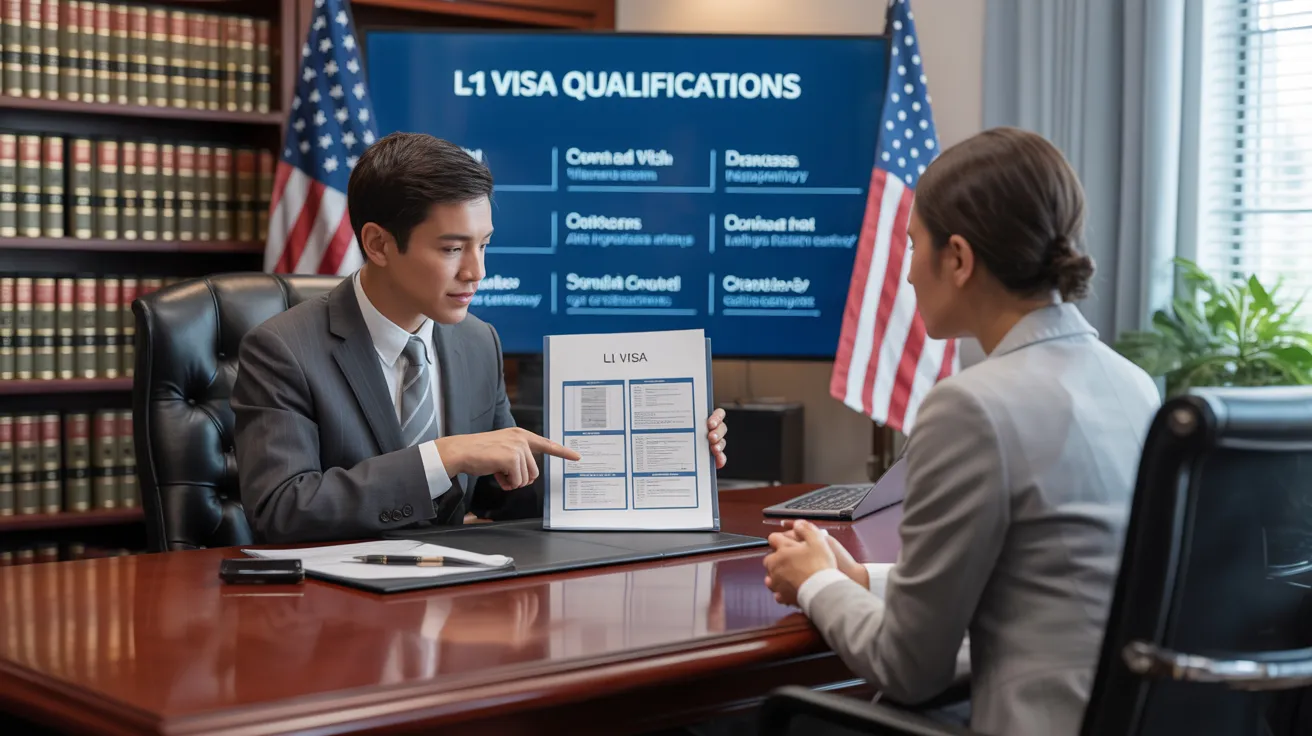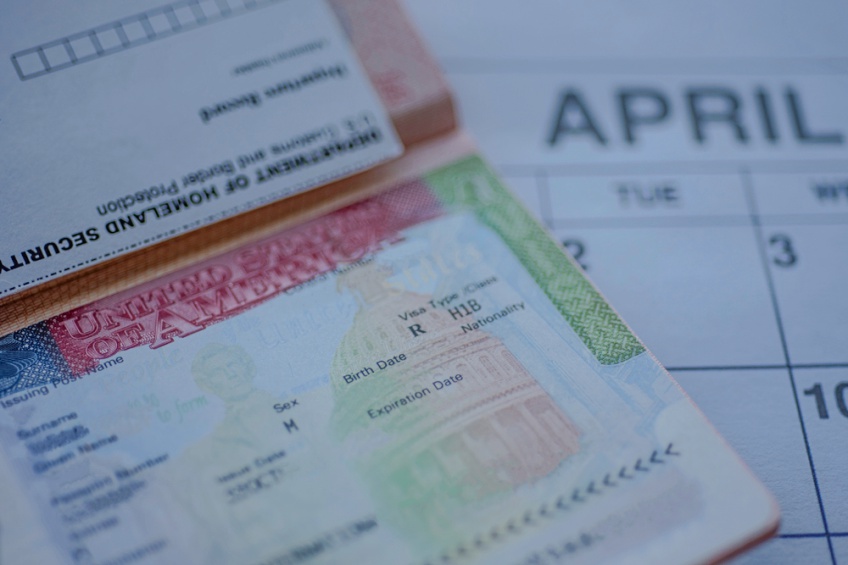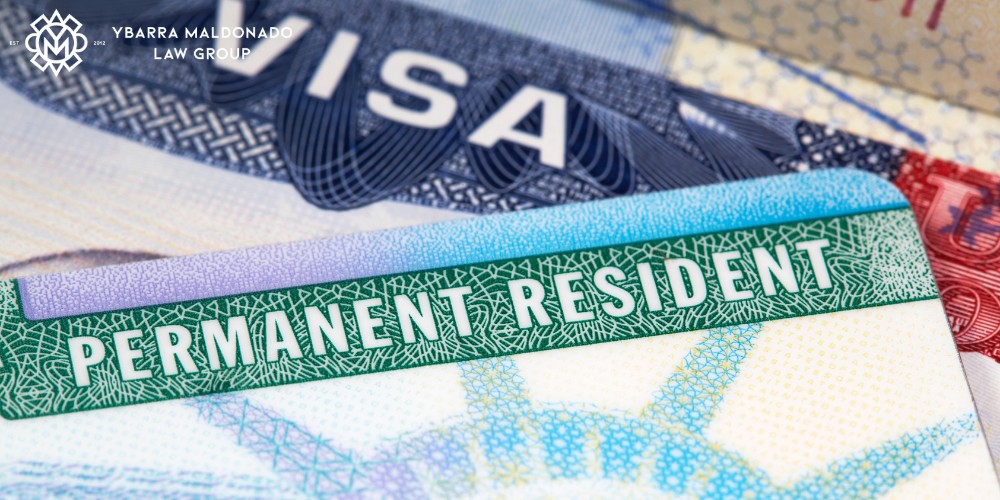Opening Opportunities: A Comprehensive Overview to the L1 Visa Process
The L1 visa process provides a vital path for multinational companies seeking to move essential staff members throughout boundaries. Understanding the subtleties of eligibility criteria, the distinctions between L-1A and L-1B visas, and the ins and outs of the application process can significantly affect an applicant's success. Maneuvering this complex landscape is not without its obstacles, and cautious interest to documentation and employer sponsorship is essential. As we check out the vital parts of this process, the approaches for conquering potential obstacles will certainly come to be noticeable, disclosing exactly how educated preparation can open up a globe of possibilities.
Comprehending the L1 Visa
Comprehending the L1 visa involves recognizing its significance as a vital device for international business seeking to move experienced staff members between worldwide workplaces. This non-immigrant visa classification assists in the movement of execs, managers, and specialized expertise employees to the United States, thereby allowing organizations to keep operational connection and harness worldwide ability successfully. The L1 visa is divided into two main categories: L-1A for supervisors and executives, and L-1B for workers possessing specialized knowledge.The L1 visa offers an essential duty in improving a company's one-upmanship in the global industry - L1 Visa. By enabling companies to transfer their key workers, organizations can ensure that essential jobs are managed by certified individuals that are already knowledgeable about the firm's society and operational procedures. This internal transfer mechanism not just cultivates knowledge sharing but likewise promotes development and cooperation throughout borders.Moreover, the L1 visa is commonly favored for its relatively simple application process compared to other visa categories, as it enables for double intent, allowing holders to seek long-term residency while on a temporary copyright. This function makes the L1 visa especially appealing for both employers and staff members, as it streamlines the path for proficient specialists to establish lasting residency in the USA
Qualification Standards
Eligibility for the L1 visa depends upon several essential criteria that assure both the staff member and the company satisfy particular certifications. This non-immigrant visa is made for international firms to move employees from international workplaces to U.S. counterparts.Firstly, the company needs to be a certifying organization, which consists of a moms and dad company, branch, associate, or subsidiary of a united state organization. The company needs to have been doing business for a minimum of one year both in the united state and abroad. This guarantees that the firm has sufficient operational security and a genuine presence.Secondly, the worker needs to hold a supervisory, exec, or specialized understanding placement. For L1A visas, the applicant should show managerial or executive qualifications, while L1B visas focus on specialized expertise related to the company's items, services, or procedures. Additionally, the staff member has to have helped the foreign entity for at the very least one continuous year within the last 3 years before their application.Lastly, the staff member's function in the united state should line up with their previous setting, ensuring that their abilities and know-how are leveraged for the company's benefit.
Sorts Of L1 Visas
The L1 visa category makes up 2 main kinds designed to assist in the transfer of staff members within multinational firms: the L1A visa for managers and execs, and the L1B visa for staff members with specialized knowledge. Each kind serves unique purposes and has details eligibility criteria.The L1A visa is customized for individuals that hold managerial or executive positions within a business. This visa makes it possible for top-level staff members to transfer to an U.S. branch, subsidiary, or associate of the exact same company. Applicants for the L1A visa should show that they have been employed in a supervisory or executive capacity for at the very least one continual year within the previous three years prior to their application. Additionally, this visa offers a longer period of keep, initially approved for 3 years, with the opportunity of extensions for approximately 7 years.In comparison, the L1B visa is planned for specialists with specialized understanding pertaining to the company's items, solutions, or processes. To qualify, candidates must show that their competence is critical to the organization and that they have helped a minimum of one continual year within the last 3 years in a function that needed this specialized understanding. The L1B visa is at first approved for 3 years, with expansions offered for approximately 5 years.Both visa types are vital for companies seeking to enhance their worldwide operations by leveraging competent personnel, thus promoting development and efficiency within the united state market.
Application Process
Guiding with the L1 copyright process involves several essential steps that should be diligently followed to ensure a successful result. The process starts with the united state employer, who should initially establish eligibility by demonstrating a qualifying connection with the international entity and verifying that the staff member satisfies the specific needs for the L1 visa group being sought.Once eligibility is confirmed, the employer initiates the procedure by filing Kind I-129, the Application for a Nonimmigrant Employee, with the U.S. Citizenship and Immigration Provider (USCIS) This kind has to be gone along with by an in-depth description of the task tasks to be carried out, the organizational framework of both the U.S. and foreign entities, and the staff member's certifications. It's important to confirm that all details is accurate and complete, as noninclusions or inaccuracies can cause delays or denials.Upon authorization of the I-129 petition, the next step entails the employee applying for the L1 visa at an U.S. embassy or consular office in their home country. This stage requires the completion of Type DS-160, the Online Nonimmigrant copyright, and scheduling a meeting. During the interview, the candidate must present evidence sustaining their qualifications and the company's petition.After the visa is granted, the worker can enter the USA to work in the marked role. Overall, careful prep work and adherence per step of the application procedure are necessary for an effective L1 visa result.
Needed Documents

Crucial Kinds Required
Navigating the L1 Visa process calls for mindful focus to the essential types and documents needed for a successful application. The key type required is the Form I-129, Application for a Nonimmigrant Employee, which should be finished and submitted by the U.S. company. This type outlines the details of the work deal and the qualifications of the staff member seeking the L1 Visa.Alongside Type I-129, the candidate will certainly need to full Form I-539 if going along with household members are additionally requesting visas. Additionally, the company needs to provide evidence of the certifying partnership between the united state entity and the foreign entity, usually necessitating the entry of corporate records such as short articles of unification or economic statements.Moreover, it is necessary to include the L Classification Supplement to Kind I-129, which defines the kind of L Visa being requested-- either L-1A for managers and executives or L-1B for employees with specialized understanding. Candidates ought to guarantee that all types are signed and dated properly, as insufficient entries can lead to delays or denials. Appropriately assembling these vital types lays the structure for a smoother L1 copyright procedure.

Supporting Proof Needs
Sustaining paperwork is important for a successful L1 copyright, as it validates the claims made in the application. Candidates should supply a variety of records to demonstrate eligibility for the visa, which is classified right into 2 primary kinds: evidence of the qualifying relationship between the united state and foreign entities and proof of the candidate's qualifications.To establish the connection, candidates should submit documentation such as company business charts, financial declarations, and proof of ownership. These records verify that the international business has a qualifying partnership with the U.S. company, whether as a parent firm, subsidiary, branch, or affiliate.For the applicant's qualifications, essential records include a thorough employment letter from the international employer, detailing the applicant's work title, responsibilities, and period of employment. Furthermore, educational qualifications, such as degrees and diplomas, must be given to confirm the applicant's proficiency in the appropriate area.
Employer Sponsorship Papers

Usual Challenges
Navigating the L1 visa procedure presents numerous typical difficulties that candidates ought to understand. Trick problems usually include rigid documents demands, potential delays in handling times, and the need for strict legal conformity. Comprehending these challenges can assist applicants better prepare and minimize risks throughout their copyright trip.
Paperwork Needs
The L1 copyright process frequently provides substantial challenges associated with paperwork needs. Applicants need to give comprehensive documents to establish eligibility, which can cause complication and possible delays. Secret papers consist of evidence of a certifying partnership between the U.S. and foreign employer, evidence of the applicant's work background, and comprehensive info regarding the work role in the U.S.One usual obstacle is collecting enough proof to show the nature of the certifying partnership. Firms commonly struggle to existing clear business graphes or monetary statements that show the link between the entities. In addition, guaranteeing that letters of support from employers accurately mirror the candidate's task responsibilities and qualifications is essential, as obscure summaries can lead to denials.Another issue arises from the need for in-depth task descriptions that line up with the L1 visa categories. Applicants should articulate not just their current function but additionally their supervisory or specialized knowledge obligations clearly. This necessitates a complete understanding of both the candidate's position and the regulatory language utilized in L1 applications.
Handling Dead Time
Experiencing hold-ups in processing times is an usual difficulty encountered by L1 visa applicants, usually leading to irritation and uncertainty. Several variables add to these hold-ups, including high application quantities, boosted scrutiny of applications, and management backlogs within the united state Citizenship and Immigration Provider (USCIS) Candidates may locate that processing times can differ greatly relying on the service facility managing their application, as each center has its own work and efficiency degrees. Furthermore, the complexity of the applicant's situation, such as the demand for substantial paperwork or explanation, can further prolong wait times.In some instances, problems associated with the applicant's present migration standing or previous visa history may additionally bring about extra delays, as USCIS may call for further evaluation or information. It is crucial for candidates to stay positive throughout this period, preserving open communication with their employers and legal reps to deal with any prospective concerns promptly.Understanding these handling time obstacles can help L1 visa applicants get ready for feasible hold-ups and mitigate the effect on their change and job plans. Perseverance and diligence are necessary merits in navigating this complex procedure.
Lawful Conformity Issues
Lots of L1 visa applicants run into legal compliance problems that can complicate their journey toward getting the visa. Understanding and adhering to the details laws established by the united state Citizenship and Immigration Solutions (USCIS) is essential. Usual difficulties include demonstrating the qualifying connection between the foreign and U.S. employers, along with proving that the candidate possesses the requisite specialized expertise or managerial capacity.Additionally, applicants should supply comprehensive documentation detailing their work duties, business structure, and financial viability of the united state entity. Insufficient or imprecise paperwork can lead to hold-ups or even denials. Companies should also assure that they abide by labor laws, consisting of wage and working condition criteria, which can affect visa eligibility.Another usual problem entails preserving compliance with the regards to the visa once approved. Changes in employment condition, job obligations, or company structure can necessitate modifications to the visa, which if not attended to quickly can lead to lawful difficulties. Therefore, staying notified about conformity needs and looking for legal advise when essential is necessary to navigate the intricacies of the L1 visa procedure effectively.
Tips for Success
Success in the L1 copyright procedure commonly depends upon precise preparation and interest to detail. To improve your opportunities of approval, start by completely understanding the qualification demands for both the L1A and L1B visa groups. Examine whether your placement at the business qualifies as supervisory, executive, or specialized knowledge, as this classification especially impacts your application.Next, collect substantial documents that validates your insurance claims. This consists of business graphes, detailed job descriptions, and evidence of the company's operational structure. Clear and succinct proof of the certifying relationship between the L1 Visa U.S. entity and the foreign entity is vital. Verify that all files are organized realistically and offered in a specialist fashion, as this reflects your commitment and seriousness regarding the application.Engage the solutions of a skilled migration lawyer who specializes in L1 visas. Their competence can verify invaluable, guiding you via complex regulations and guaranteeing that all paperwork follows current regulations. In addition, plan for the interview by exercising solutions to usual inquiries and being all set to discuss your role and payments to the firm extensive.
Frequently Asked Questions
Can Family Members Accompany the L1 Visa Holder?
Yes, relative of L1 visa holders, including spouses and unmarried children under 21, can accompany the primary visa owner. They may additionally look for L2 visas, which enable them to reside in the USA.
Exactly How Long Can I Keep on an L1 Visa?
The L1 visa permits preliminary remains of up to 3 years, with the opportunity of extension. L1A visa holders might stay for an optimum of seven years, while L1B visa owners can stay for five years.
Can L1 Visa Owners Obtain a copyright?
Yes, L1 visa owners can get a permit. L1 Visa Requirements. They may seek long-term residency with employment-based categories, usually needing sponsorship from their employer, given they fulfill the necessary credentials and documentation demands
What Happens if My L1 copyright Is Rejected?
If your L1 copyright is denied, you may obtain a notice detailing the reasons for rejection. You can seek to appeal the choice, reapply, or discover different visa choices based on your scenarios.
Exist Any Type Of Travel Restrictions With an L1 Visa?
An L1 visa normally permits international traveling; however, re-entry to the U. L1 Visa Requirements.S. rests upon maintaining valid condition. Tourists need to ensure conformity with visa problems to stay clear of issues upon return
Final thought
